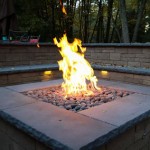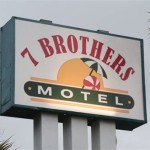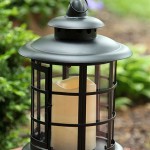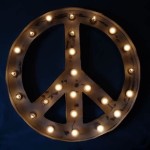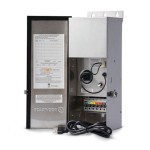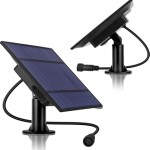Outdoor Restaurant Lighting: The Enchanting Allure of String Lights
Outdoor restaurant lighting plays a pivotal role in shaping the dining experience, extending operational hours, and establishing a desired ambiance. Among the diverse options available, string lights stand out for their versatility, cost-effectiveness, and ability to create a warm and inviting atmosphere. Strategic implementation of string lights can transform an ordinary patio into a captivating outdoor oasis, drawing in customers and enhancing their overall satisfaction.
The impact of lighting on customer perception should not be underestimated. Properly illuminated outdoor spaces not only provide visibility but also contribute significantly to creating a sense of comfort, safety, and visual appeal. String lights, in particular, offer a customizable solution that can be tailored to complement the restaurant's brand identity and architectural style. From rustic bistros to modern eateries, string lights offer an adaptable lighting solution that can enhance the aesthetic appeal and attract a wider customer base.
Selecting the Right Type of String Lights
The market offers a wide array of string light options, each possessing unique characteristics and suitability for different applications. Key considerations when selecting string lights for outdoor restaurant use include bulb type, string gauge, weather resistance, and overall aesthetic.
Bulb Type: Incandescent bulbs produce a warm, traditional glow, but they are less energy-efficient and have a shorter lifespan compared to LED bulbs. LED string lights, on the other hand, offer significant energy savings, extended lifespan, and a wider range of color temperatures. They are a more sustainable and cost-effective long-term investment, despite the higher initial cost. Furthermore, LED bulbs are less susceptible to breakage and heat generation, making them a safer option for outdoor installations.
String Gauge: The gauge of the wire determines the string's durability and its ability to withstand outdoor elements. Heavier gauge wires are more resistant to damage from wind, rain, and UV exposure. Commercial-grade string lights typically feature thicker gauge wires, offering superior performance and longevity compared to residential-grade options. Investing in commercial-grade string lights is particularly crucial for restaurants, where durability and reliability are paramount to ensure consistent operation and minimize maintenance costs.
Weather Resistance: String lights destined for outdoor use must be specifically designed to withstand moisture, temperature fluctuations, and other environmental factors. Look for string lights with an IP rating of at least IP44, indicating protection against splashing water. Higher IP ratings offer even greater protection against water ingress, making them suitable for locations with heavy rainfall or exposure to direct sunlight. Selecting weather-resistant string lights will prevent premature failure and ensure safe operation throughout the year.
Aesthetic Considerations: Beyond the technical aspects, the aesthetic appeal of the string lights should align with the restaurant's overall design theme. Bulb shape, size, and color temperature can significantly impact the ambiance. Edison-style bulbs evoke a vintage, rustic charm, while globe-shaped bulbs offer a more contemporary look. Color temperature, measured in Kelvin (K), determines the warmth or coolness of the light. Warmer color temperatures (2700K-3000K) create a cozy and inviting atmosphere, while cooler color temperatures (4000K-5000K) offer a brighter, more modern feel. Carefully consider these aesthetic factors to ensure that the string lights complement the restaurant's brand identity and create the desired ambiance.
Strategic Placement and Installation Techniques
Proper placement and installation of string lights are crucial for achieving the desired aesthetic effect and ensuring safety. Careful planning and attention to detail can transform an ordinary outdoor space into a visually stunning and inviting dining area.
Planning the Layout: Before installing any string lights, carefully plan the layout to maximize its impact and ensure even illumination. Consider the architectural features of the space, such as trees, pergolas, and awnings, as potential anchor points for the string lights. Experiment with different patterns and configurations to find the most visually appealing arrangement. Common layouts include draping the lights horizontally across the space, suspending them vertically from overhead structures, or wrapping them around trees and other landscape elements.
Secure Anchoring: Proper anchoring is essential for preventing the string lights from sagging or becoming damaged by wind. Use sturdy hooks, eyelets, or cable ties to secure the string lights to the chosen anchor points. Ensure that the anchor points are capable of supporting the weight of the string lights, especially in areas with strong winds. For longer spans, consider using a guide wire to provide additional support and prevent sagging. Securely anchoring the string lights will ensure a professional-looking installation and prevent potential safety hazards.
Power Source and Connections: Determine the location of the power source and plan the wiring accordingly. Use outdoor-rated extension cords and weatherproof connectors to ensure safe and reliable operation. Avoid overloading circuits by calculating the total wattage of the string lights and ensuring that it does not exceed the capacity of the circuit. Consider using a timer or dimmer to control the string lights and adjust the brightness to suit the time of day and the desired ambiance. Adhering to electrical safety standards is paramount to prevent accidents and ensure the safety of customers and staff.
Safety Considerations: Prioritize safety during the installation process. Turn off the power before working with electrical components. Use appropriate safety equipment, such as gloves and safety glasses. Avoid running string lights across walkways or areas where they could pose a tripping hazard. Regularly inspect the string lights for damage or wear and tear, and replace any damaged components immediately. Following these safety precautions will minimize the risk of accidents and ensure a safe and enjoyable outdoor dining experience.
Maintaining and Enhancing String Light Displays
Proper maintenance is essential for prolonging the lifespan of string lights and ensuring their continued performance. Regular cleaning, bulb replacement, and seasonal adjustments can keep the string lights looking their best and prevent premature failure.
Regular Cleaning: Dust and debris can accumulate on the string lights, reducing their brightness and detracting from their aesthetic appeal. Periodically clean the string lights with a soft cloth or brush to remove any buildup. For more stubborn dirt, use a mild soap and water solution. Avoid using harsh chemicals or abrasive cleaners, as they can damage the string lights. Regular cleaning will maintain the brightness and clarity of the string lights, ensuring a more visually appealing display.
Bulb Replacement: Even with LED bulbs, occasional replacement may be necessary. Check the string lights regularly for burned-out or damaged bulbs and replace them immediately. When replacing bulbs, use the same type and wattage as the original bulbs to ensure consistent illumination and prevent electrical problems. Keep spare bulbs on hand to minimize downtime and maintain a consistent lighting display. Prompt bulb replacement will ensure that the string lights continue to provide the desired level of illumination and ambiance.
Seasonal Adjustments: Adjust the string light display to reflect the changing seasons and holidays. During the summer months, consider using brighter, cooler-toned bulbs to create a refreshing and inviting atmosphere. In the fall and winter, switch to warmer-toned bulbs to evoke a cozy and festive ambiance. Incorporate seasonal decorations, such as leaves, pumpkins, or holiday ornaments, to enhance the festive atmosphere. Adapting the string light display to the changing seasons will keep the outdoor space looking fresh and inviting throughout the year.
Integration with Other Lighting: String lights should ideally complement other outdoor lighting elements, such as pathway lights, spotlights, and architectural lighting. Aim for a layered lighting scheme that provides both ambient and task lighting. Pathway lights can illuminate walkways and prevent tripping hazards, while spotlights can highlight architectural features or landscape elements. By integrating string lights with other lighting elements, restaurants can create a well-balanced and visually appealing outdoor space that enhances the dining experience and attracts customers.
By carefully selecting the right type of string lights, strategically placing and installing them, and implementing a regular maintenance schedule, restaurants can harness the enchanting allure of string lights to create a captivating and inviting outdoor dining experience. The warmth, ambiance, and visual appeal that string lights provide can significantly enhance the customer experience, driving business and establishing a memorable brand identity.

Restaurant Outdoor Patio String Lighting Ideas Omaha Nebraska

Everything You Need To Know About Outdoor Lighting

Led String Lights Commercial Patio Lighting

Restaurant Outdoor Patio String Lighting Ideas Omaha Nebraska

28 Backyard Lighting Ideas How To Hang Outdoor String Lights

Restaurant Outdoor Patio String Lighting Ideas Omaha Nebraska

Outdoor String Light Ideas

Sl101 Led Low Voltage Bistro Outdoor String Lights Kings Lighting

Lighting That Sparks Interest In Your Restaurant S Patio

Outdoor Lighting Tips For Commercial Spaces
Related Posts
